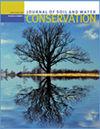以 "边界 "为喻,开展大规模、整体性的水资源可持续性研究
IF 2.6
4区 农林科学
Q2 ECOLOGY
引用次数: 0
摘要
大规模的整体水可持续性研究无论是在研究工作本身还是在实地应用研究成果方面都充满了方法论挑战(Aeschbach-Hertig 和 Gleeson,2012 年;Bierkins 和 Wada,2019 年;Hargrove 等,2013 年;Megdal 等,2016 年)。在复杂系统中实现可持续水资源未来的科学方法,如 Elias 等人(2023 年)和 Talchabhadel 等人(2021 年)最近描述的方法,需要综合科学与利益相关者的整体协作管理相结合,才能取得理想、有意义的结果。虽然综合科学可以确定水资源未来可能和/或可能的结果,但利益相关者驱动的决策和实施才能决定和实现可持续发展的首选结果。单凭研究人员的知识,无论多么优秀,都不可能改变利益相关者的行动或可能的结果。决定实际结果的将是利益相关者基于各种因素的偏好和选择,而不仅仅是基于科学的信息。与水资源可持续性相关的 "棘手问题 "看似难以解决,但面对新的信息和研究产生的不断进步的科学,这些问题似乎依然存在。恶性问题中出现的许多挑战都跨越了传统的界限(物理界限和象征性界限),包括学科界限、生物物理界限、部门界限、社会界限和管辖界限。我们认为,积极识别这些界限并有意识地制定弥合这些界限的策略,对于综合研究取得有意义的成果以及在水资源可持续发展方面取得理想的现实进展至关重要。在一个为期六年的项目中,我们重点研究了美国/墨西哥边境地区水资源的未来,该地区的特点是水资源日益匮乏,供应减少,需求增加。本文章由计算机程序翻译,如有差异,请以英文原文为准。
“Borders” as a metaphor in implementing large-scale, holistic water sustainability research
Large-scale holistic water sustainability research is fraught with methodological challenges both in the research enterprise itself and the application of results on the ground (Aeschbach-Hertig and Gleeson 2012; Bierkins and Wada 2019; Hargrove et al. 2013; Megdal et al. 2016). Scientific approaches to realize sustainable water futures in complex systems, such as those described recently by Elias et al. (2023) and Talchabhadel et al. (2021), require integrated science combined with holistic, collaborative management by stakeholders to achieve desirable, meaningful results. While integrated science can identify possible and/or probable outcomes for water futures, it is stakeholder-driven decision-making and implementation that will determine and realize preferred outcomes for sustainability. Researchers’ knowledge alone, no matter how good, is not likely to alter stakeholder actions or probable outcomes. It will be stakeholder preferences and choices based on a myriad of factors—not just science-based information—that will determine the actual outcomes. The seemingly intractable “wicked problems” relating to water sustainability seem to persist in the face of new information and advancing science produced by research. Many of the challenges that arise in wicked problems cut across traditional boundaries (both physical and figurative), including disciplinary, biophysical, sectoral, social, and jurisdictional ones. We propose that actively identifying these boundaries and consciously developing strategies for bridging them is essential for meaningful results from integrated research and desirable real-world progress in water sustainability. During a six-year project focused on the future of water in a region of the US/Mexico border that is characterized by increasing water scarcity as supplies dwindle and demands …
求助全文
通过发布文献求助,成功后即可免费获取论文全文。
去求助
来源期刊
CiteScore
4.10
自引率
2.60%
发文量
0
审稿时长
3.3 months
期刊介绍:
The Journal of Soil and Water Conservation (JSWC) is a multidisciplinary journal of natural resource conservation research, practice, policy, and perspectives. The journal has two sections: the A Section containing various departments and features, and the Research Section containing peer-reviewed research papers.

 求助内容:
求助内容: 应助结果提醒方式:
应助结果提醒方式:


